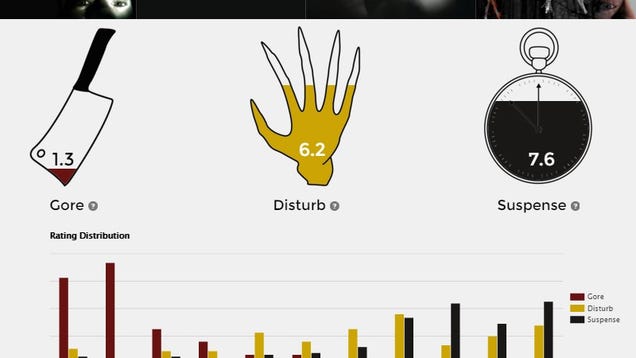
We’ve had a rewatch for one prequel, but there are still two more! After critics and fans alike came at The Phantom Menace with finely-sharped machetes, George Lucas decided to get a cowriter on Episode II. His name was Jonathan Hales, and I saw him on stage at Celebration II, the second Star Wars fan convention (back when they held it in Indianapolis—it was only a short road trip from home). He was talking about how it was important not to get bogged down in who-wrote-what-line, but did make a winking comment that Obi-Wan’s whole “You don’t want to sell me deathsticks” bit was his.
To be fair, it’s a pretty great bit.
The jump from Episode I to II was a great flying leap. Fans learned it was going to take place ten years later, that Anakin would be recast as indie darling Hayden Christensen, and suddenly Boba Fett had a dad? Yoda was CGI, and about to fight with a lightsaber? Christopher Lee was involved?

You go, deadly handsome man.
Then, of course, there was the fandom uproar over the title. Apparently people thought “Attack of the Clones” did not have the required oomph/sexiness for a Star Wars film. It was too silly, too trivial. Lucas claimed that the title was meant to harken back to old SFF serials from his childhood, and frankly, that seems as good a reason as any. Also… people really thought that title was cornier than “The Phantom Menace”? Come on.
The title did give fans a very important clue, of course: that the Clone Wars, name-dropped by Luke in Episode IV would indeed be a focal point of the prequel trilogy. The Expanded Universe (now the Legends canon) had already given their vague say on the Clone Wars, being that they were wars fought over the emergence of clone technology. It was a sound idea, and a sharp science-fiction move too. But Star Wars has never been heavy on the science front, and when you looked into it more closely, the idea that a galaxy with artificial intelligence and interstellar travel and freaking laserswords would balk at the idea of cloning seems a bit off base.

Lucas ignored these suggestions utterly, and made the name more literal—it’s called the Clone Wars because it is a war being fought by clones. Get it? But audiences knew nothing of that plan in the beginning. We only knew that we were finally going to figure out what sort of “damned fool idealistic crusade” Anakin followed Obi-Wan on. (In truth, he didn’t really do that, and Obi-Wan wasn’t such a big fan of the Clone Wars. Obi-Wan was just spinning tales, as he is wont to do when young Luke is nearby.)
So I rewatched it! Carefully, studiously, and again, doing my best to keep personal reservations and opinions out of the mix. And here is the curious result:
My stance on this movie has shifted entirely—Attack of the Clones is a weaker film than The Phantom Menace.

This was supposed to make the movie cool. It didn’t, really.
Episode I had a lot of excess material that needed trimming, and a lot of ideas that needed expanding. The one benefit the The Phantom Menace had going for it was that you could make plenty of inferences based on what you saw and heard. You could guess what Lucas was going for, even when the narrative was vague or sloppy. But Episode II, on paper, makes no sense whatsoever.
So Padmé comes back to Coruscant (she’s a senator these days) to vote on a very important bill, one that will create an army for the Republic, rather than allowing individual systems to defend themselves however they see fit. She’s against it, being from a pacifist culture and all that jazz. Her decoy is immediately offed in an assassination attempt—again, how do we not get more from Padmé and her handmaidens? it’s way too interesting to keep pushing off into a corner—and Padmé visits the Chancellor to talk about what went down. She tells him and several Jedi Council members that she thinks the Separatist Leader, former Jedi Count Dooku, was behind the attempt. She never explains why she assumes that, unless we’re meant to believe that the Separatists want war, which has not been implied at all up to this point.

More importantly, we never learn why we should be upset about the Separatist movement; they think they’re government is failing them, so they’ve decided to opt out. Why is this a problem? Will it create trade issues? Is the Republic concerned about vying against another large government? We hear people make vague comments like “The day we stop believing democracy can work is the day we lose it,” but we don’t see any evidence of that occurring. We just see a group that has decided that the political body in charge no longer has their best interests at heart. It’s not like the US Civil War; the Separatists’ desire to leave the Republic is down to the government’s antiquated systems, their overblown grandeur, their inability to get things done.
(I should point out that all of these questions are answered—and then some—in the Clone Wars cartoon. Seriously, that show is a gift, and works so hard to show the machinations going on across the galaxy. It puts everything that occurs from this film forward into perspective.)

We’re better on television.
Obi-Wan and Anakin are dispatched to look after Senator Amidala, and rather than attempt to show any growth Anakin has made (aside from becoming a totally different person), the first thing we find out is that he’s been carrying his torch for Padmé all this time, and now he’s gonna… well, we don’t know. But Obi-Wan is keen to tease him about it. The movie then proceeds to pepper horrifying dialogue throughout where Anakin proves that his creepy nine-year-old self has nothing on his creepy twenty-year-old self. Lines like, “She covered the cameras; I don’t think she liked me watching her.” and “I am haunted by the kiss you never should have given me.” and “I don’t like sand. It’s rough and course and irritating, and it gets everywhere. Not like here. Everything is soft and smooth.”
Because, at is core, Attack of the Clones was meant to be a love story. That’s right, this budding romance is meant to be the central narrative, the one that turns the wheel of the universe. The soundtrack single released in 2002 was the track “Love Across the Stars,” and it is so achingly beautiful that I can almost forget the dialogue and the awkward giggles, and just use this piece of music to tell me everything I need to know about Anakin and Padmé’s relationship. This motif has more to say about their forbidden love than the entire movie.

Do you remember this poster? Is anyone besides me curious as to why Anakin’s side features a lightsaber erection?
Oh that’s right—did I mention it was forbidden? Because that was a brand new thing that the film introduced. We got wind that this might be coming when Yoda got all freaked out by Anakin’s attachment to his mom in the previous film, but here is where we come to the crux of Anakin’s fall: It begins when he decides to fall in love with the woman of his dreams, against the commandments of the Jedi Order.
And in theory, I love this idea. The notion that the Jedi bring about their own destruction by demanding that their disciples avoid romantic attachment is a profound move—especially when we know that Luke’s familial love for his father is ultimately what saves him. It shows us just how deeply out of touch the Order is. Plus, I’m a sap, and forbidden love plotlines sounded like an awesome thing to have in a Star Wars movie.
The problem, of course, comes from the fact that the dialogue here moves beyond cliche and into parody. And no, Anakin being young is not an excuse for lines like, “My heart is beating, hoping that kiss will not become a scar. You are in my very soul, tormenting me.” If he were fifteen, and fronted a high school emo band, then I guess. He’s trying to impress a grown woman, a shrewd politician, and even more unbelievably, she goes for it. After straight up saying to him, “Please don’t look at me like that. It makes me uncomfortable.” No. This is not how real people act.

NO. STOP CREEPING.
And that’s not even the best part! No, we haven’t even gotten to the point where Anakin buggers off to Tatooine because he’s certain his mother is in danger. He finds out that she’s been freed, and is married to a man named Cliegg Lars. (This was a huge alteration. Lucas’ original intention was for Owen to be Obi-Wan’s brother, and a large portion of the fanbase knew that. It was a big deal to have that detail scrapped.) The Lars family tells Anakin that his mother was taken by Tusken Raiders, and he goes looking for her. She dies in his arms on the floor of a tent, and Anakin’s reaction is to murder every last Sand Person in the camp.
There are about eighteen things wrong with this, the primary one being that the Sand People are simply cast as villains in this, even though they’re meant to be Tatooine natives. But the most horrific part of all is that Anakin comes back and admits this to Padmé and her response is essentially—I’m gonna marry that man.
Her sweetie just committed small-scale genocide and she comforts him. Yes, he lost his mother, but these are not proportionate reactions. If he had told her “I killed the men guarding her,” or even “I killed their warriors,” her willingness to overlook it might be understandable. Not better, but understandable. But after a guy tells you that he essentially destroyed an entire tribe of people, that he decapitated kids, that’s the point where you run to your shiny Naboo spaceship and get as far away as possible. (It’s worse with the deleted scene, an extension of Anakin’s admission, where Padmé counters this horrifying truth with “To be angry is to be human.” …ARE YOU F*CKING SERIOUS?) And worst of all, the entire sequence undermines the real, righteous grief Anakin should be feeling over the death of this mother, an event that will have a huge impact on the course of his development.

“It’s cool that you killed all those kids – they weren’t real people anyway.”
And then we have the B plot, which is Obi-Wan trotting all over the place to solve the mystery of Amidala’s attacker. Some of this stuff is charming and fun (whatever, I love Dex’s Diner, that whole retro-future 1950s setup is adorable), but the rest of it is totally confusing. Obi-Wan can’t find the planet Kamino in the records, and Jedi Master Jocasta—the super-librarian—says the most un-librarian-like thing I’ve ever heard: If we don’t got it, it’s plum made up. So Obi-Wan has to get some Jedi preschoolers to tell him that the planet is totally there, even though it should be obvious because of gravity. I think that entire scene was just an excuse to show tiny Jedi students.
Obi-Wan gets to Kamino and there’s this weird subplot about Jedi Master Sifo Dyas ordering the Republic a clone army. And here is where the film completely jumps the shark because we never get an explanation for this ploy or why it would ever work on people who have brains that make thoughts. Sifo Dyas is dead: the real point in that Sidious and Dooku are responsible for the clone army order and used his name so it seemed legit, but that is NEVER SAID OUT LOUD BY ANYONE. More importantly, Kamino has been making these clones for the past decade—if Dyas is dead, who is their contact? Here is one perfect place to interject a random Darth Sidious scene, showing him talking to the cloners. Without knowing, it seems as though the Kaminoans have been hammering away at that army for ten years without ever checking in with a Republic representative, which is not how business is done, period. In fact, they should have had people coming to inspect their work this whole time, someone checking off on their choice of DNA donor, requests and lab work and a million other little things.

Which brings me to my most anger-making question: why, in the name of all that is holy, did the clone template have to be BOBA FETT’S DAD. WHY. All it really proves is that George Lucas has no idea why the fandom liked Fett in the first place. He’s the silent cowboy type, the guy who never takes his mask off by choice because he’s got a true sense of theatricality. And now I’m watching kid!Fett sit in the Slave I cockpit with his dad, saying crap like “Get him, dad! Get him!” This is not a thing I ever wanted. I doubt anyone really wanted it. The only true purpose in putting Jango in the film is to have a Boba Fett-like character around to get in a fight with a Jedi. (This one really rankled for me personally because Fett in the Legends canon was really important to teenage me. I’ve gotten past it, but I sort of pretended it hadn’t happened for a while.)
Obi-Wan follows the trail and gets captured on Geonosis, then questioned by Count Dooku, and Christopher Lee is utterly wasted here. Yet again, nothing that he offers makes sense. His interrogation of Obi-Wan is just confusing; is he trying to mollify him? Turn him to the Dark Side? Proposition him? Nothing gets explained, people are just constantly in peril. Like the whole droid factory mess, which may be one of the most boring action sequences in any science fiction film ever. (Stop abusing Threepio like this, he’s better than those puns you keep piling on him.) And finally, we get a big battle at the end, and… the clones are useful? Hooray? This is one movie where we actually need a bit more politics—we need to understand how this looks to the galaxy, we need more public opinion, more cloak and dagger. The out-and-out firefight tells us nothing. It’s just a stock end-of-movie sequence.

“I hate our relationship.”
And even above all of these strange problems, we have the most important takeaway: this poor cast. Pity them. Why was everyone directed this way? It’s some of the most wooden acting I’ve ever seen, and coming from truly excellent actors. The only person who manages to come off with his usual gravitas is Christopher Lee (probably because you don’t really direct Christopher Lee—you just point a camera at him and agree that everything that happens from that point forward is perfect). If you pay attention to the dialogue, we’re meant to infer that Anakin and Obi-Wan have this sparring brotherly relationship, that they’re playful and supportive of each other. Unfortunately, McGregor seems to have been directed to act the part of a grumpy dad. None of the character’s wit comes through (with the pointed exception of the “good job” exchange) and we can’t really blame Anakin for chafing under his direction. Christensen and Portman have all the chemistry of two wood blocks being banged against each other, and I don’t think it’s because they truly couldn’t have sold the couple—I think they’re being told to play it far too innocent to be believable. Neither of these characters needs to seem so naïve and wide-eyed.
And then we have more pointless symmetry. Last movie, Anakin blew up a Death Star droid control ship. This movie he gets his arm cut off. Okay. You can start his transition to “more machine now than man,” as Obi-Wan put it to Luke. But mirroring something just to mirror it is usually a bad choice.

Mirrors. It’s arty and stuff.
The kids get married and no one notices that Anakin is gone because I guess he has lots of free time now that the Clone Wars have started(?) And we’ve just watched over two hours of romance/mystery/war mongering that will hopefully lead… somewhere. Just be thankful be have the novelization to look forward to—we’ll get much more information there, yet again.
Emily Asher-Perrin had a friend who used to faux-pick up women in bars by walking up and saying “I don’t like sand, it’s rough, but you’re smooth!” He never got a date off of it. You can bug her on Twitter and Tumblr, and read more of her work here and elsewhere.











































